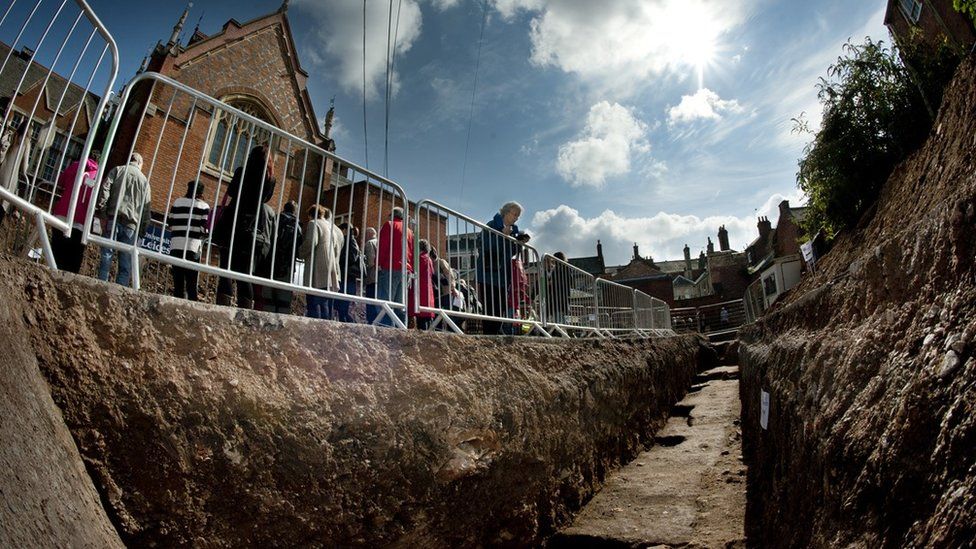Richard III burial site in Leicester granted protection
- Published

The car park was situated on top of the former church of the Greyfriars, a 13th-Century monastic friary
King Richard III's burial site, which was famously found beneath a council car park, has been given protected status.
The last Plantagenet king's remains were discovered in 2012 after a team of enthusiasts and historians pinpointed the location in Leicester.
It has been dubbed "one of the most significant in our national history".
Richard III, who was killed at the Battle of Bosworth in 1485, was reburied at Leicester Cathedral.
He was originally interred at the church of the Greyfriars, a 13th-Century monastic friary.
The church appears to have been demolished during the reign of Henry VIII.
However, because much of the area was not built upon during the intervening centuries, it is believed Greyfriars remains relatively "well-preserved" underground.
Making the friary into a scheduled monument means special consent is required before any work or changes can be made.
What has happened to the car park?
The car park was excavated in 2012
Perhaps unsurprisingly, as soon as the authorities appreciated the significance of the site, its days as a car park were numbered.
Once the identity of the remains was confirmed, plans for a visitor centre were approved and it opened just over a year later.
The centre, housed in a former school, was extended to cover the actual location of the grave.
A window in the floor allows visitors to see below their feet to the spot where the king was found.
Council workers have - obviously - had to find alternative spots for their vehicles, and car park attendant Mike Mistry has since been made redundant.
Who was Richard III?
Despite having one of the shortest reigns of any British monarch, Richard is arguably the most notorious of them all.
Often portrayed on stage and screen as a hunchbacked, bloodthirsty murderer (mainly thanks to Shakespeare), by many accounts he died a brave and valiant death.
He also introduced the concept of bail, and passed tax reforms which survive to the modern day.
Find out more:
'Preserved for the future'
Richard III's remains were found under a car park in Leicester
Duncan Wilson, chief executive of Historic England, the body that advised the government, said: "The site of Greyfriars where Richard III was hastily buried in the days following his death in the final battle of the War of the Roses is one of the most significant in our national history.
"The archaeological remains on the site are now well understood and fully deserve protection as a scheduled monument."
Heritage Minister, John Glen, said the government was ensuring the remains of the once lost medieval friary are "preserved for future generations."
The protected area will be managed in partnership with Leicester City Council.
- Published24 November 2017